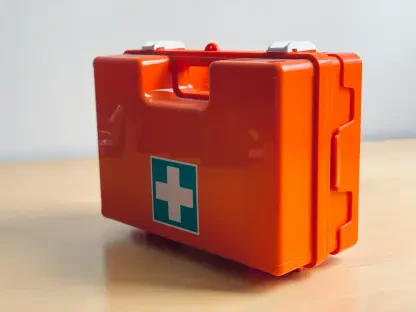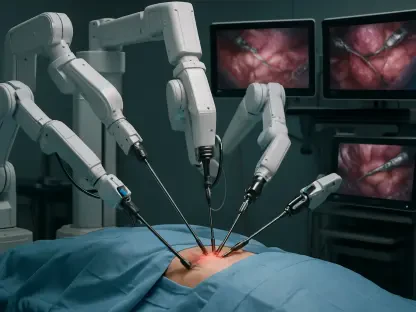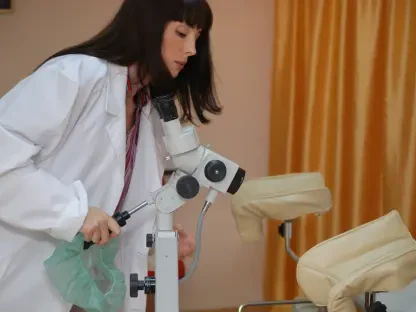The European Union has recently rolled out significant amendments to its Medical Device Regulation (MDR) and In Vitro Diagnostics Regulation (IVDR) with the goal of addressing potential supply chain disruptions that could jeopardize the availability of medical devices and diagnostics. These changes, planned to take effect in January 2025, are aimed at protecting patient safety and public health by ensuring a more robust and predictable supply chain. As the new rules come into effect, stakeholders across the medical device supply chain—from manufacturers to distributors and healthcare professionals—must understand and adapt to these regulatory requirements to ensure continued compliance and minimal disruption.
Legislative Changes and Their Scope
One of the primary alterations introduced by the European Commission is the addition of Article 10a to both the MDR and IVDR, which mandates that manufacturers notify competent authorities and other relevant stakeholders of any anticipated supply interruptions or discontinuations well in advance. This requirement applies to all models or types of devices placed on the Union market, with the notable exception of custom-made devices. The scope includes both new devices and legacy devices that were initially introduced under previous directives but continue to be in use.
To ensure stakeholders have sufficient time to prepare for potential supply shortages, the new rules stipulate that manufacturers must notify the relevant parties at least six months in advance. However, the regulations acknowledge that exceptional, unforeseen circumstances, such as natural disasters, may necessitate a shorter notification period. The European Commission has also issued a questions and answers document to offer manufacturers detailed guidance on what constitutes an interruption or discontinuation, helping them navigate their obligations and avoid any regulatory pitfalls.
Responsibilities of Manufacturers
Under these new regulations, manufacturers have a central role in ensuring the stability of the medical device supply chain. They are required to notify the competent authority of the Member State where they or their authorized representative are based, in addition to informing economic operators, health institutions, and healthcare professionals who are directly supplied with the device. The notifications must include comprehensive explanations for the supply interruption or discontinuation, which might range from regulatory challenges and performance-related issues to supply chain bottlenecks or strategic decisions by the company.
In fulfilling these notification duties, manufacturers will need to complete a “manufacturer information form” that details the reasons behind the supply interruption or discontinuation and any additional relevant information. This form is designed to facilitate the structured communication of essential information to the competent authorities. Manufacturers must also stay vigilant, continuously monitoring their internal operations and third-party data to verify potential supply issues, assessing if these could have serious impacts on patient health or public safety.
Role of Distributors and Importers
Distributors and importers play a critical role in ensuring the smooth dissemination of information within the supply chain. They must promptly relay any received notifications about supply interruptions or discontinuations to other relevant economic operators, health institutions, and healthcare professionals. This ensures timely dissemination of crucial information, allowing all affected parties to take necessary steps to mitigate potential supply disruptions and minimize the impact on patient care.
To achieve this, distributors and importers must implement effective traceability systems that ensure prompt and precise sharing of information. Accurate records and reliable supplier identification are vital in these systems to facilitate immediate communication of any supply interruptions. Having such robust measures in place enables distributors and importers to swiftly address emerging issues, maintaining a continuous flow of medical devices to the market and thereby upholding the stability of the supply chain.
Competent Authorities and Healthcare Regulators
Upon receiving notifications from manufacturers about supply interruptions or discontinuations, the competent authorities of the EU Member States must act swiftly to manage potential supply issues across the region. They are obliged to alert their counterparts in other Member States and the European Commission without undue delay, ensuring a coordinated approach to safeguarding patient safety and public health. This networked response is crucial, as it allows for the timely dissemination of information and collaborative problem-solving to mitigate any negative impacts on healthcare services.
The information shared with competent authorities is governed by stringent confidentiality provisions outlined in Article 109 of the MDR and Article 102 of the IVDR. These legal requirements focus on protecting sensitive data while ensuring transparency where necessary. Competent authorities are tasked with facilitating a unified response among Member States, sharing information and coordinating efforts to address supply chain disruptions effectively. This collaborative approach is essential to maintaining the supply of CE-marked devices and ensuring compliance with the new regulatory requirements.
Proactive Compliance and Monitoring
As the January 2025 effective date for the new regulations approaches, manufacturers are encouraged to adopt proactive compliance and monitoring strategies to manage supply risks effectively. Ensuring an uninterrupted supply of medical devices involves establishing robust monitoring and communication processes and fostering close relationships with suppliers. These practices enable manufacturers to identify and resolve emerging issues early, helping them meet the six-month notification requirement and minimize the potential for supply disruptions.
Manufacturers are advised to develop comprehensive strategies that anticipate and manage possible supply interruptions well before the regulation’s effective date. This means setting up robust monitoring systems, ensuring clear communication channels, and nurturing effective relationships with suppliers and other stakeholders. By implementing these proactive measures, manufacturers can ensure compliance with the new regulations, thereby safeguarding patient safety and public health while maintaining the stability of the medical device supply chain.
Importance of Supply Chain Transparency
The European Union has recently introduced major updates to its Medical Device Regulation (MDR) and In Vitro Diagnostics Regulation (IVDR) to prevent potential supply chain disruptions that could threaten the availability of medical devices and diagnostics. These important revisions, scheduled to be implemented in January 2025, aim to safeguard patient safety and public health by ensuring a more reliable and predictable supply chain.
When these new rules take effect, stakeholders throughout the medical device supply chain—ranging from manufacturers and distributors to healthcare professionals—will need to comprehend and adapt to these regulatory changes. Engaging with these amendments is crucial to maintaining compliance and minimizing any disruptions.
The strengthened regulations are designed to provide greater transparency and traceability within the supply chain, which is vital for the timely availability of medical devices and diagnostic tools. Updating and complying with these standards will likely require substantial efforts from all involved parties, including adjusting operational procedures and potentially investing in new technologies to meet the enhanced requirements.
These changes reflect the EU’s commitment to improving the overall quality and safety of medical devices and diagnostics for its citizens. By addressing potential vulnerabilities in the supply chain, the new MDR and IVDR regulations are set to ensure that medical practitioners and patients continue to have access to essential medical tools without interruption.









